- Identify Aphid Infestation: Early Detection is Key
- Natural Predators: Invite Beneficial Insects into Your Garden
- Horticultural Oil: Suffocate Aphids and Prevent Damage
- How Does Horticultural Oil Work?
- Benefits of Using Horticultural Oil
- Application Guidelines
- Final Thoughts
- Neem Oil: Disrupt Aphids’ Life Cycle and Repel Them
- How Neem Oil Works
- Application of Neem Oil
- Precautions
- Conclusion
- Soap and Water Spray: DIY Aphid Repellent
- Materials:
- Instructions:
- Tips:
- Pruning: Remove Aphid-Infested Plant Parts
- Reflective Mulch: Deter Aphids from Infesting Your Plants
- What is Reflective Mulch?
- How Does Reflective Mulch Work?
- Benefits of Reflective Mulch
- How to Use Reflective Mulch
- Conclusion
- Companion Planting: Use Plants That Naturally Repel Aphids
- 1. Marigolds
- 2. Nasturtiums
- 3. Chives
- 4. Lavender
- 5. Dill
- Q&A:
- What are aphids and why are they harmful to plants?
- Are there any natural methods to control aphids?
- Are chemical pesticides an effective solution for aphid control?
- How can I prevent aphids from infesting my plants in the first place?
- What should I do if my plants are already infested with aphids?
- Video: How to make Homemade Pesticide to Control Aphids and White flies.
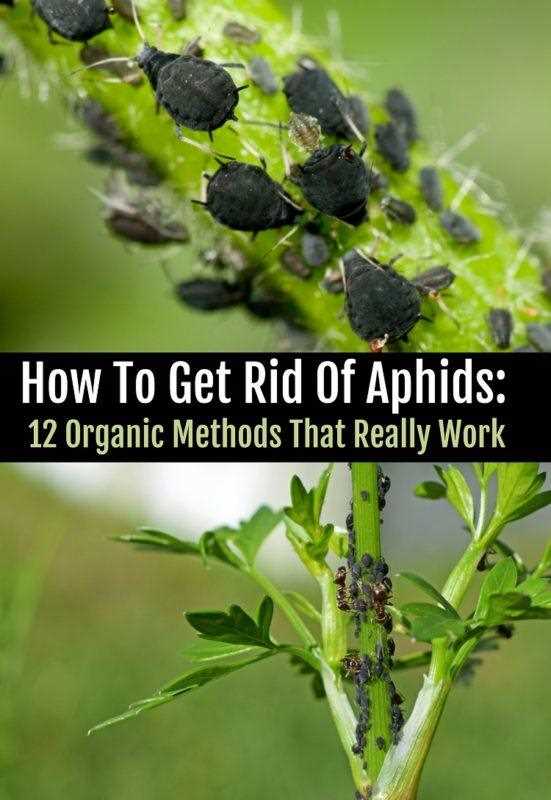
Aphids are a common and persistent problem for gardeners and plant enthusiasts. These small insects can wreak havoc on your plants by feeding on their sap and transmitting diseases. If left uncontrolled, aphids can quickly multiply and infest your entire garden, causing stunted growth and even death of your beloved plants.
Fortunately, there are several effective methods for aphid control that can help you safeguard your plants. One of the most commonly used methods is natural predators, such as ladybugs and lacewings, which feed on aphids and can significantly reduce their population. Introducing these beneficial insects into your garden can be a simple and eco-friendly solution to your aphid problem.
Another popular method is the use of insecticidal soaps and oils. These products work by suffocating the aphids and disrupting their cell membranes. They are safe to use on most plants and can be an effective way to control aphids without harming beneficial insects or the environment. However, it’s important to follow the instructions on the product label and avoid using these treatments during hot or sunny weather, as they can cause damage to your plants.
Additionally, practicing good garden hygiene can help prevent aphid infestations. Remove any weeds or plants that attract aphids, regularly inspect your plants for any signs of infestation, and promptly remove and destroy any heavily infested plants. By taking these preventive measures, you can minimize the risk of aphids infesting your garden and ensure the health and vitality of your plants.
Identify Aphid Infestation: Early Detection is Key
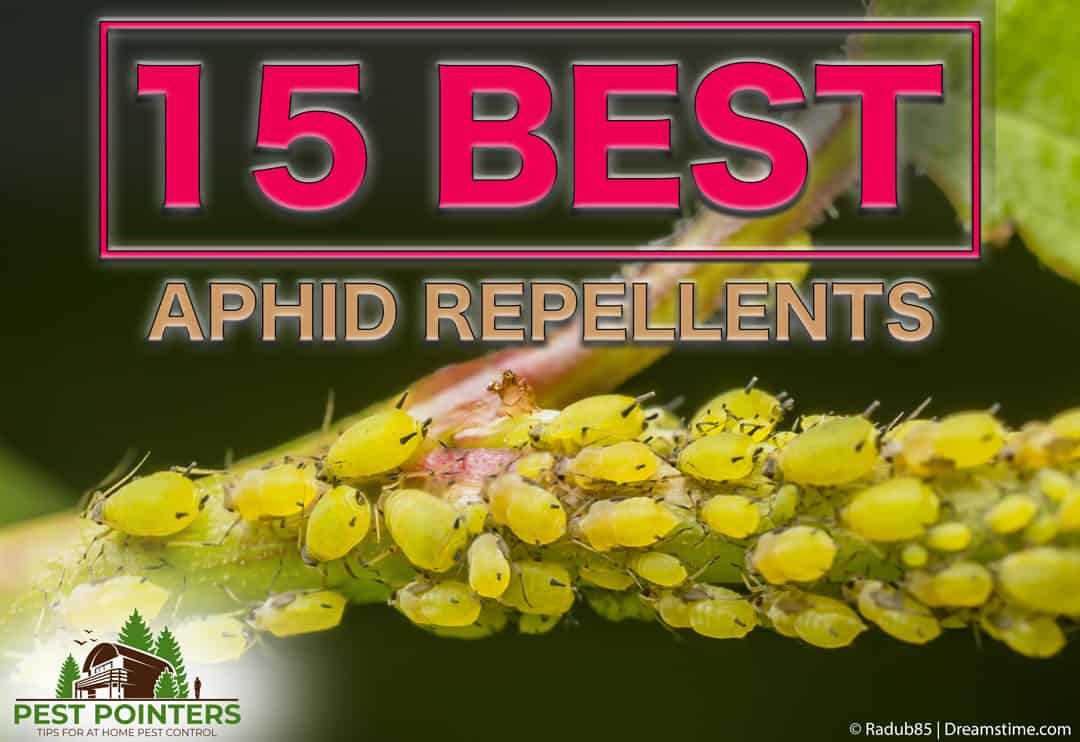

Aphid infestation can cause significant damage to plants if not identified and managed early on. These small, soft-bodied insects feed on the sap of plants, depleting their nutrients and weakening their growth. Identifying an aphid infestation in its early stages is crucial for preventing further damage and implementing effective control measures.
Visual Signs
- Presence of clusters or colonies of small insects on the stems, leaves, or buds of plants.
- Shiny, sticky residue known as honeydew on the leaves, which is a result of aphids feeding.
- Distorted or curled leaves, yellowing or browning of foliage, and stunted plant growth.
Physical Examination
Inspect the plants closely to identify aphids:
- Look for small, pear-shaped insects with soft bodies, usually less than 1/8 inch long.
- Check the undersides of leaves, where aphids often hide.
- Use a magnifying glass if necessary to spot the tiny pests.
Behavioral Indicators
Observing the behavior of plants can also help in identifying aphid infestation:
- Aphids attract ants due to the honeydew they produce, so an increase in ant activity around plants may indicate aphid presence.
- Plants with aphid infestations often exhibit wilting or drooping even when adequately watered.
Plant Damage
Aphids can cause various types of damage to plants:
- Direct damage: Feeding on the sap of plants weakens their overall health, leading to stunted growth and reduced yield.
- Secondary damage: Aphids can transmit viral diseases to plants, further compromising their health and productivity.
- Indirect damage: The honeydew produced by aphids can attract other pests, such as ants, mold, and fungus.
Monitoring and Prevention
Regularly inspecting plants for signs of aphid infestation and implementing preventive measures can help in early detection and control:
- Remove and destroy infested plant parts to prevent the spread of aphids.
- Encourage natural predators of aphids, such as lady beetles and lacewings, to establish in the garden.
- Use insecticidal soaps or horticultural oils as a non-toxic method of controlling aphids.
- Implement good gardening practices, including proper plant spacing and adequate watering, to promote healthy plant growth and reduce susceptibility to aphid infestations.
Early identification of aphid infestation is crucial for preventing extensive damage to plants. By closely monitoring your plants and implementing preventive measures, you can safeguard your garden from the harmful effects of aphids.
Natural Predators: Invite Beneficial Insects into Your Garden
One effective and eco-friendly method for controlling aphids in your garden is to rely on natural predators. By encouraging the presence of beneficial insects, you can create a balanced ecosystem that helps keep aphid populations in check.
1. Ladybugs (Ladybirds)
Ladybugs are well-known predators of aphids. These colorful insects feed on aphids, mites, and other garden pests. To attract ladybugs to your garden, you can plant nectar-producing flowers such as daisies, marigolds, or yarrow. Ladybugs also require a water source, so having a shallow dish filled with water can help ensure their presence in your garden.
2. Lacewings
Lacewings are another natural enemy of aphids. Their larvae are particularly voracious predators and can consume large numbers of aphids. To attract lacewings, you can plant parsley, dill, or sweet alyssum. These plants produce nectar that adult lacewings feed on.
3. Hoverflies
Hoverflies, also known as flower flies, are beneficial insects that feed on aphids in their larval stage. To attract hoverflies, you can plant flowers such as lavender, daisies, or sunflowers. These plants provide a source of nectar that adult hoverflies need.
4. Praying Mantises
Praying mantises are fascinating insects that are known for their patient hunting behavior. These predators can be quite effective in controlling aphid populations. To attract praying mantises, you can create a habitat by placing tall grasses and small shrubs in your garden. These plants offer shelter and hiding places for mantises.
5. Birds
Many birds, such as sparrows, finches, and chickadees, feed on aphids. By providing bird feeders and bird baths in your garden, you can attract these feathered allies. Additionally, planting trees and shrubs that produce berries or seeds can provide valuable food sources for birds, encouraging them to stay and help control aphid populations.
By inviting these natural predators into your garden, you can reduce the need for chemical aphid control methods and create a more sustainable and balanced environment for your plants.
Horticultural Oil: Suffocate Aphids and Prevent Damage
Horticultural oil is a highly effective method for controlling aphids and preventing damage to your plants. This all-natural solution works by suffocating the aphids, killing them on contact.
How Does Horticultural Oil Work?
Horticultural oil is a refined petroleum-based product that acts as a smothering agent. When applied to the leaves and stems of plants, it forms a thin film that suffocates aphids by blocking their respiratory system. This prevents them from feeding on the plant and eventually leads to their demise.
Benefits of Using Horticultural Oil
There are several benefits to using horticultural oil as a method of aphid control:
- Safe for the Environment: Horticultural oil is considered an organic pest control option and is safe to use around humans, pets, and beneficial insects.
- Effective on Different Life Stages: Horticultural oil works on aphids in all life stages, from eggs to adults.
- Residual Effect: The thin film left behind by horticultural oil can provide continued protection against aphids and other pests for a period of time after application.
- Easy to Use: Horticultural oil is simple to apply and can be sprayed directly onto the affected plants.
Application Guidelines
When using horticultural oil, it’s important to follow these guidelines:
- Timing: Apply horticultural oil in early spring or late fall, when the temperatures are cooler and the plants are dormant.
- Weather Conditions: Avoid applying horticultural oil during periods of high humidity, rain, or strong sunlight, as this can affect its effectiveness.
- Plant Compatibility: Some plants, particularly those with delicate or waxy foliage, may be sensitive to horticultural oil. Always check the label and do a small test application before treating the entire plant.
- Thorough Coverage: Ensure that all plant surfaces, including the undersides of leaves, are adequately coated with horticultural oil.
Final Thoughts
Horticultural oil is a powerful tool in the fight against aphids and can help safeguard your plants from damage. By suffocating these pests, horticultural oil offers an effective and environmentally friendly solution that can be easily integrated into your pest control routine.
Neem Oil: Disrupt Aphids’ Life Cycle and Repel Them
Neem oil is a natural and effective solution to control aphids and protect your plants. It is derived from the neem tree, which is native to India. Neem oil works by disrupting the life cycle of aphids, preventing them from reproducing and causing damage to your plants.
How Neem Oil Works
Neem oil contains compounds that act as insect growth regulators. When aphids come into contact with neem oil, it disrupts their hormonal balance and prevents them from molting and reproducing. This leads to a decline in aphid population over time.
Additionally, neem oil acts as a repellent, making your plants less attractive to aphids. It creates a barrier on the plant’s surface, deterring aphids from feeding and laying eggs on your plants.
Application of Neem Oil
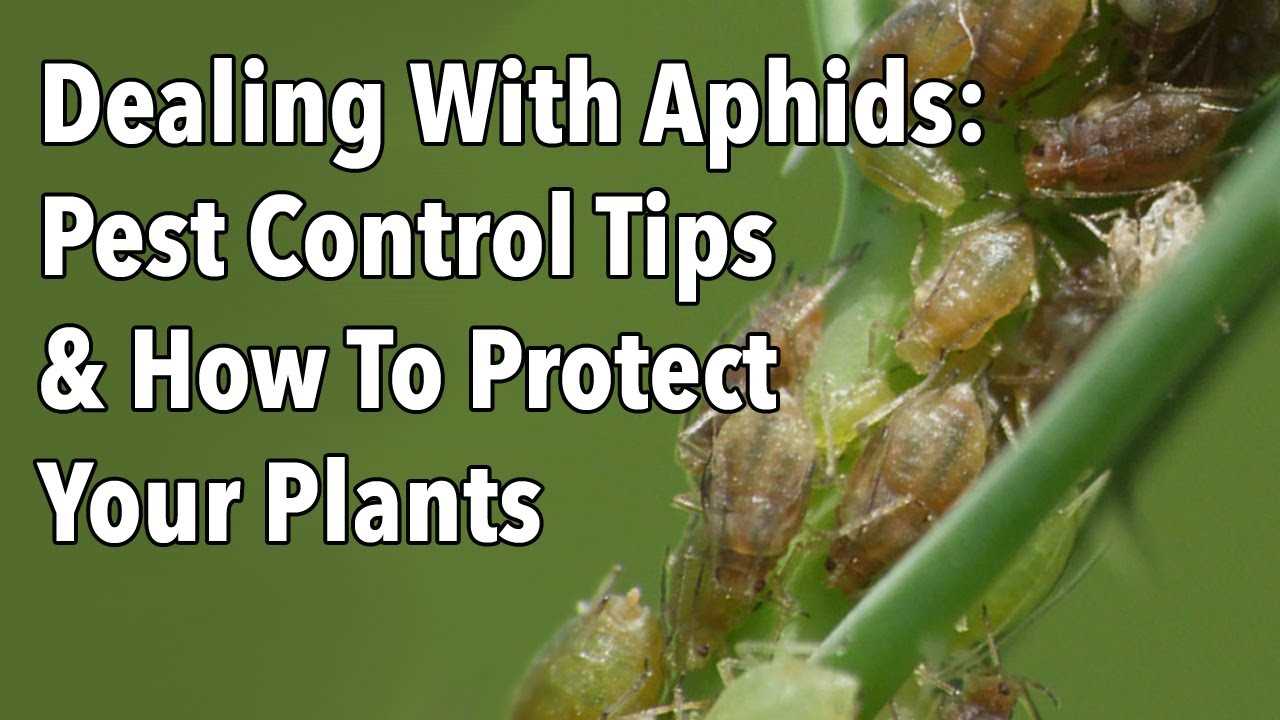

To use neem oil for aphid control, mix it with water according to the instructions on the product label. Transfer the solution to a spray bottle and thoroughly spray your plants, covering both upper and lower leaf surfaces. Pay special attention to areas where aphids are commonly found, such as new shoots and flower buds.
It is important to apply neem oil in the early morning or evening, when the temperature is cooler, to prevent leaf burn. Repeat the application every 7-10 days or as needed, especially during periods of heavy aphid infestation.
Precautions
While neem oil is generally safe for use on most plants, it is recommended to test it on a small area before applying it to the entire plant. Some plants may be more sensitive to neem oil and may experience leaf curling or discoloration. If any adverse effects occur, discontinue use.
Always follow the instructions on the product label for proper usage and dosage. Store neem oil in a cool, dark place, away from direct sunlight.
Conclusion
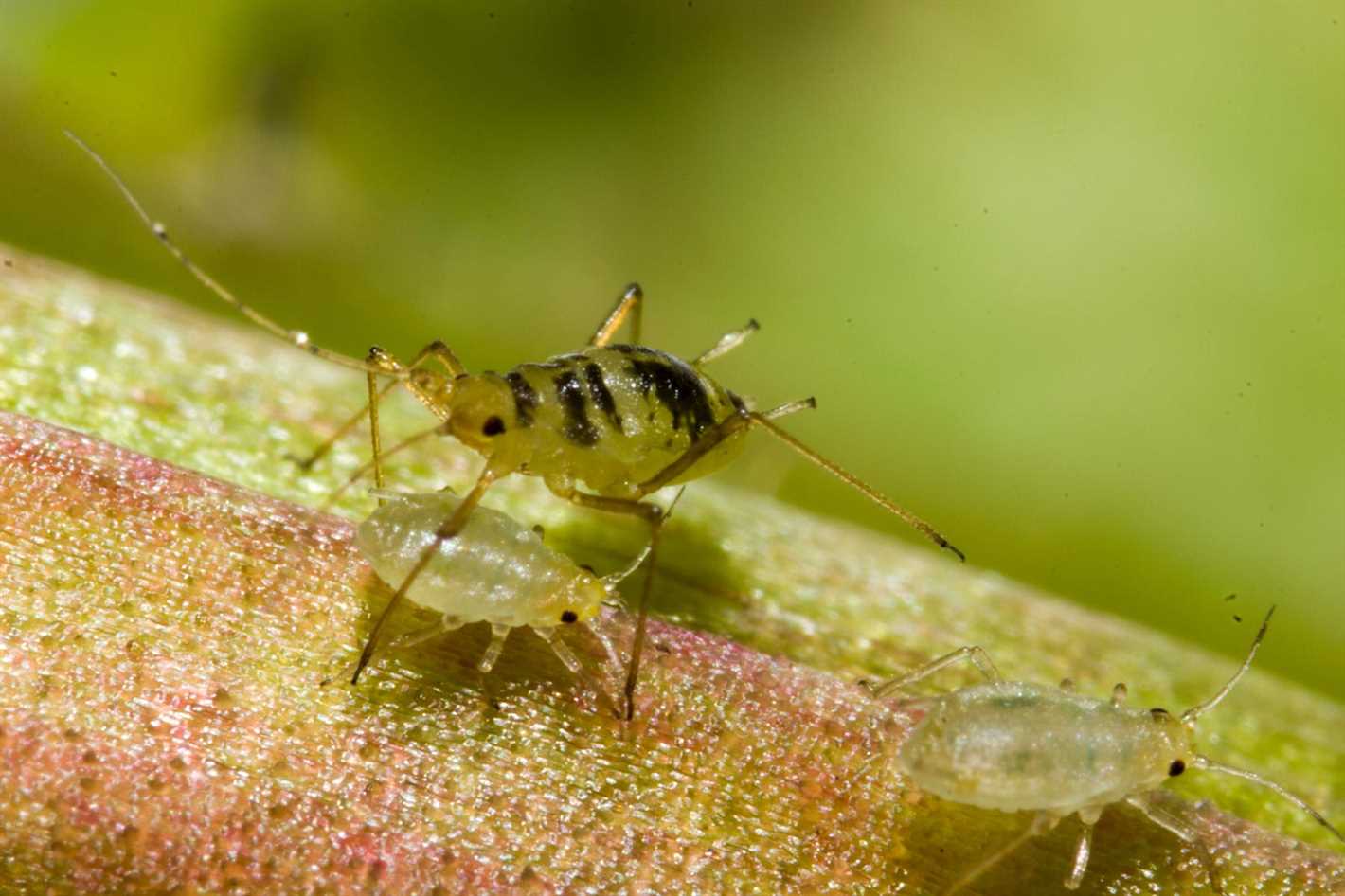

Neem oil is a natural and effective method for controlling aphids and protecting your plants. By disrupting the aphids’ life cycle and acting as a repellent, neem oil helps safeguard your plants from aphid damage. Remember to follow the instructions for proper application and precautions to ensure the best results.
Soap and Water Spray: DIY Aphid Repellent
Aphids can wreak havoc on your plants, sucking out their sap and leaving them weakened and susceptible to disease. Fortunately, you can easily make your own aphid repellent spray using simple ingredients you probably already have at home: soap and water. Here’s how to do it:
Materials:
- Mild dish soap (avoid using detergents that contain bleach or degreasers)
- Water
- Spray bottle
Instructions:
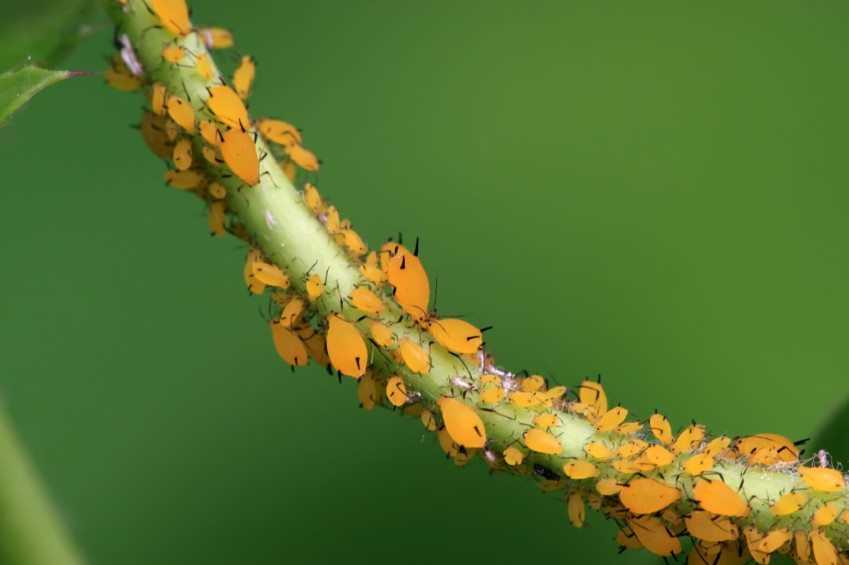

- Fill a spray bottle with water, leaving some room at the top to add the soap.
- Add a few drops of dish soap to the water in the spray bottle. The soap will help suffocate and kill the aphids.
- Gently shake the spray bottle to mix the soap and water together.
- Identify the affected plant or plants and carefully spray the solution onto the leaves, stems, and any other areas where aphids are present.
- Be sure to thoroughly cover all areas, making sure to spray both the upper and lower surfaces of the leaves.
- Repeat this process every few days, or as needed, until the aphid infestation is under control.
Tips:
- Avoid using excessive amounts of soap, as it can be harmful to plants. Stick to a mild solution to protect your plants while effectively repelling aphids.
- Test the spray on a small, inconspicuous area of the plant before applying it to the whole plant, to make sure it doesn’t cause any damage.
- For larger infestations, you may need to repeat the process more frequently or consider using alternative methods of aphid control.
Making your own soap and water spray is an affordable and eco-friendly way to control aphids and protect your plants. Give it a try and watch those pesky aphids disappear!
Pruning: Remove Aphid-Infested Plant Parts
Pruning is an effective method for controlling aphids on your plants. By removing aphid-infested plant parts, you can prevent the infestation from spreading and protect the overall health of your plants.
Identify Infested Plant Parts: Before you start pruning, carefully inspect your plants for aphid infestations. Look for signs such as curled leaves, sticky residue (honeydew), or the presence of the small, pear-shaped insects themselves. Aphids can be found on the leaves, stems, and buds of plants.
Gather Pruning Tools: To prune effectively, you will need sharp, clean pruning shears or scissors. Make sure to disinfect your tools before pruning each plant to prevent the spread of any potential diseases.
Prune Infested Parts: Once you have identified the infested plant parts, carefully prune them off using your pruning tools. It is important to make clean cuts just above a healthy bud or node to promote proper healing.
Dispose of Pruned Parts: After pruning, it is crucial to properly dispose of the aphid-infested plant parts. Avoid composting them, as this may lead to the spread of aphids to other plants. Instead, seal the pruned parts in a plastic bag and discard them in the trash.
Monitor and Repeat: After pruning, continue to monitor your plants for any signs of aphid re-infestation. If you spot any new infestations, promptly prune and dispose of the affected plant parts to prevent the infestation from spreading.
Note: Pruning should be done in conjunction with other aphid control methods, such as regular inspections, the use of natural predators, and the application of insecticidal soap or neem oil, for optimal results in controlling the aphid population on your plants.
| Pros | Cons |
|---|---|
|
|
Reflective Mulch: Deter Aphids from Infesting Your Plants
Aphids can be a significant pest for plants, causing damage to their leaves and stems. However, there are several effective methods to control aphids and protect your plants. One such method is the use of reflective mulch.
What is Reflective Mulch?
Reflective mulch is a type of mulch that is designed to reflect sunlight and deter aphids from infesting plants. It is typically made from materials such as aluminum or silver-colored plastic, which have a highly reflective surface.
How Does Reflective Mulch Work?
Reflective mulch works by creating a bright, shiny surface that confuses and repels aphids. When aphids approach plants covered with reflective mulch, they are disoriented by the intense reflection of sunlight. This discourages them from landing on the plants and reduces the risk of infestation.
Benefits of Reflective Mulch
Using reflective mulch to deter aphids offers several benefits:
- Aphid prevention: Reflective mulch effectively deters aphids, preventing them from infesting your plants and causing damage.
- Improved plant health: By preventing aphid infestations, reflective mulch helps to maintain the overall health and vigor of your plants.
- Increased sunlight reflection: The highly reflective surface of the mulch can increase sunlight reflection onto the plants, enhancing their growth and productivity.
- Environmentally friendly: Reflective mulch is a non-toxic and eco-friendly option for aphid control, making it a safe choice for both you and the environment.
How to Use Reflective Mulch
To use reflective mulch to deter aphids, follow these steps:
- Prepare the soil: Clear any existing mulch from the planting area and prepare the soil for planting.
- Apply reflective mulch: Spread a layer of reflective mulch around the base of the plants, extending it a few inches beyond the plant’s drip line.
- Secure the mulch: Use garden stakes or rocks to secure the reflective mulch in place, ensuring it does not blow away in strong winds.
Remember to monitor the reflective mulch regularly and replace it if it becomes damaged or loses its reflective properties.
Conclusion
Reflective mulch is an effective, environmentally friendly method to deter aphids from infesting your plants. By using this mulch, you can protect your plants from aphid damage and promote their overall health and growth.
Companion Planting: Use Plants That Naturally Repel Aphids
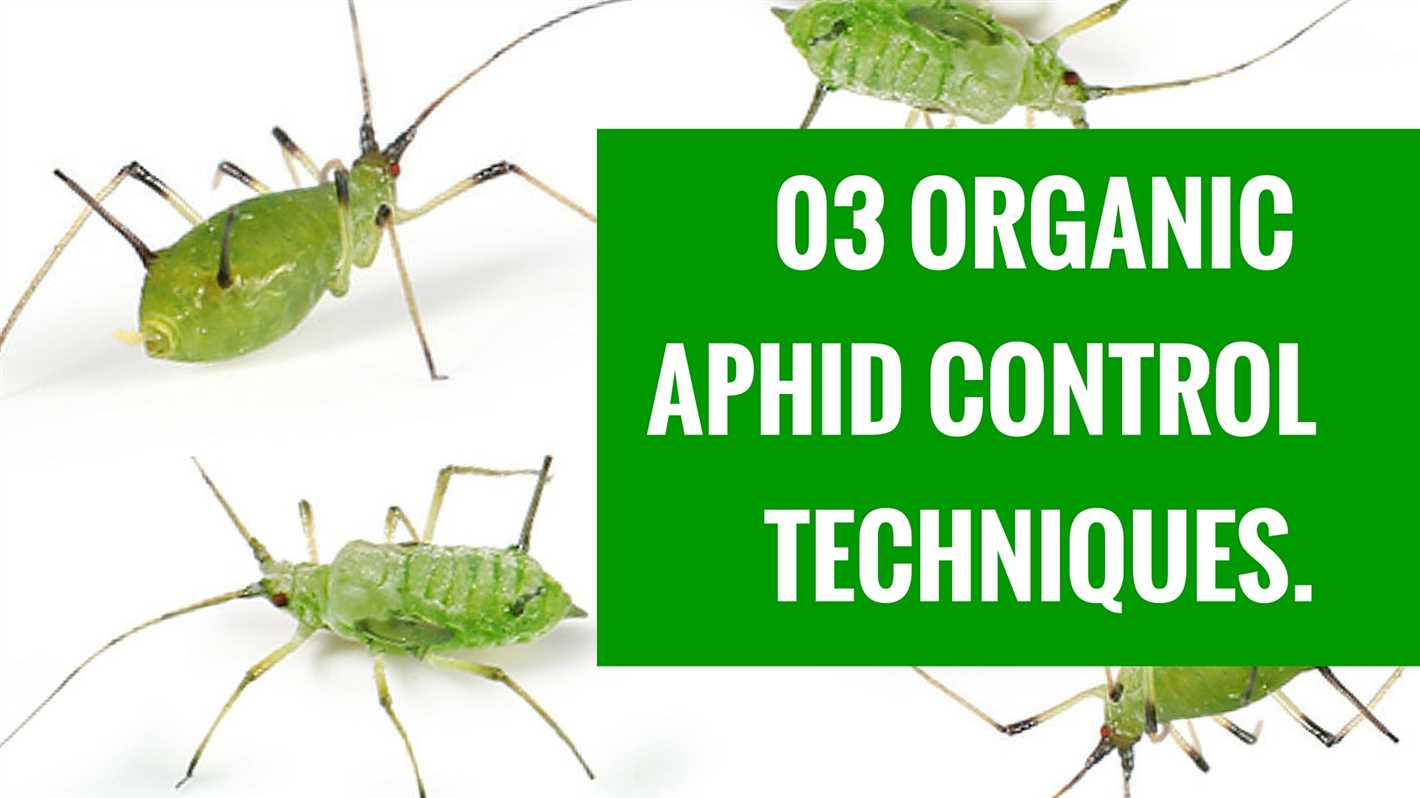

One effective method for controlling aphids is through companion planting. Companion planting involves planting certain plants together that have beneficial effects on each other. In the case of aphids, there are several plants that naturally repel these pests, making them excellent companions for your affected plants.
1. Marigolds
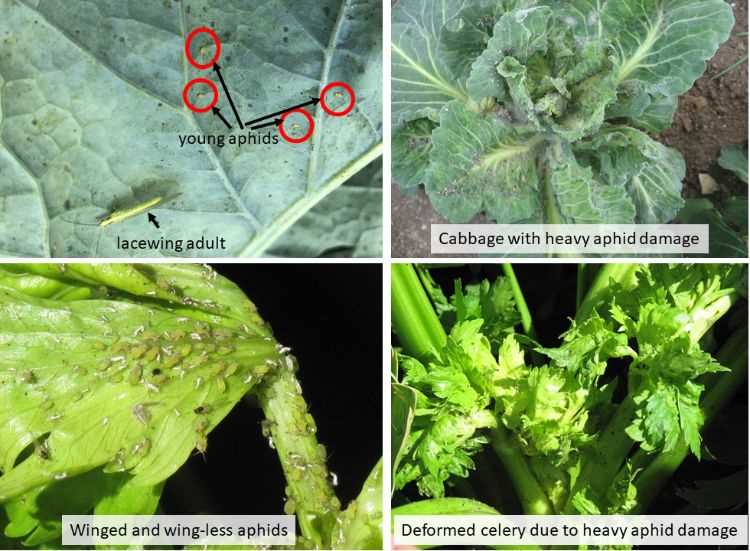

Marigolds are known for their strong smell, which repels aphids and other insects. Planting marigolds near your affected plants can help deter aphids from infesting them. Additionally, marigolds attract beneficial insects such as ladybugs and lacewings, which feed on aphids.
2. Nasturtiums
Nasturtiums are another great companion plant for aphid control. Their bright flowers attract aphids, diverting them away from your affected plants. Nasturtiums also produce a mustard oil compound that repels aphids and other pests. Planting nasturtiums near your affected plants can help deter aphids and protect your crops.
3. Chives
Chives are not only a tasty addition to your meals but also a natural aphid deterrent. They have a strong onion-like scent that repels aphids and other insects. Planting chives near your affected plants can help keep aphids away and protect them from infestation.
4. Lavender
Lavender is a plant with a pleasant scent that repels aphids and other pests. Its fragrant flowers and foliage act as a natural deterrent, making it an excellent companion plant for aphid control. Planting lavender near your affected plants can help protect them from aphid infestations.
5. Dill
Dill is not only a popular herb but also a natural aphid repellent. Its aromatic foliage repels aphids and attracts beneficial insects such as ladybugs, lacewings, and hoverflies, which feed on aphids. Planting dill near your affected plants can help deter aphids and enhance biological control.
By incorporating these companion plants into your garden, you can naturally repel aphids and protect your plants from infestation. Remember to plant these companions strategically, surrounding your affected plants and creating a barrier against aphids.
Q&A:
What are aphids and why are they harmful to plants?
Aphids are small insects that feed on the sap of plants. They can reproduce quickly and suck out a large amount of sap, causing stunted growth, curling leaves, and even death of the plant.
Are there any natural methods to control aphids?
Yes, there are several natural methods to control aphids. These include introducing beneficial insects, such as ladybugs, lacewings, and parasitic wasps, using insecticidal soaps or oils, and practicing companion planting with plants that repel aphids, such as marigolds and garlic.
Are chemical pesticides an effective solution for aphid control?
Chemical pesticides can be effective in controlling aphids, but they should be used as a last resort. They can harm beneficial insects, disrupt the ecosystem, and may require multiple applications. It is always recommended to try natural methods first and only use chemical pesticides if necessary.
How can I prevent aphids from infesting my plants in the first place?
There are several preventive measures you can take. These include regularly inspecting your plants for early signs of aphids, practicing good plant hygiene by removing any infested plant parts, avoiding over-fertilization which can attract aphids, and creating a barrier around your plants using row covers or protective netting.
What should I do if my plants are already infested with aphids?
If your plants are already infested with aphids, you can try using a strong stream of water to knock them off the plants, manually removing them with your hands or a cloth, or using an organic insecticidal soap spray. If the infestation is severe, you may need to resort to using chemical pesticides.
Video:
How to make Homemade Pesticide to Control Aphids and White flies.







